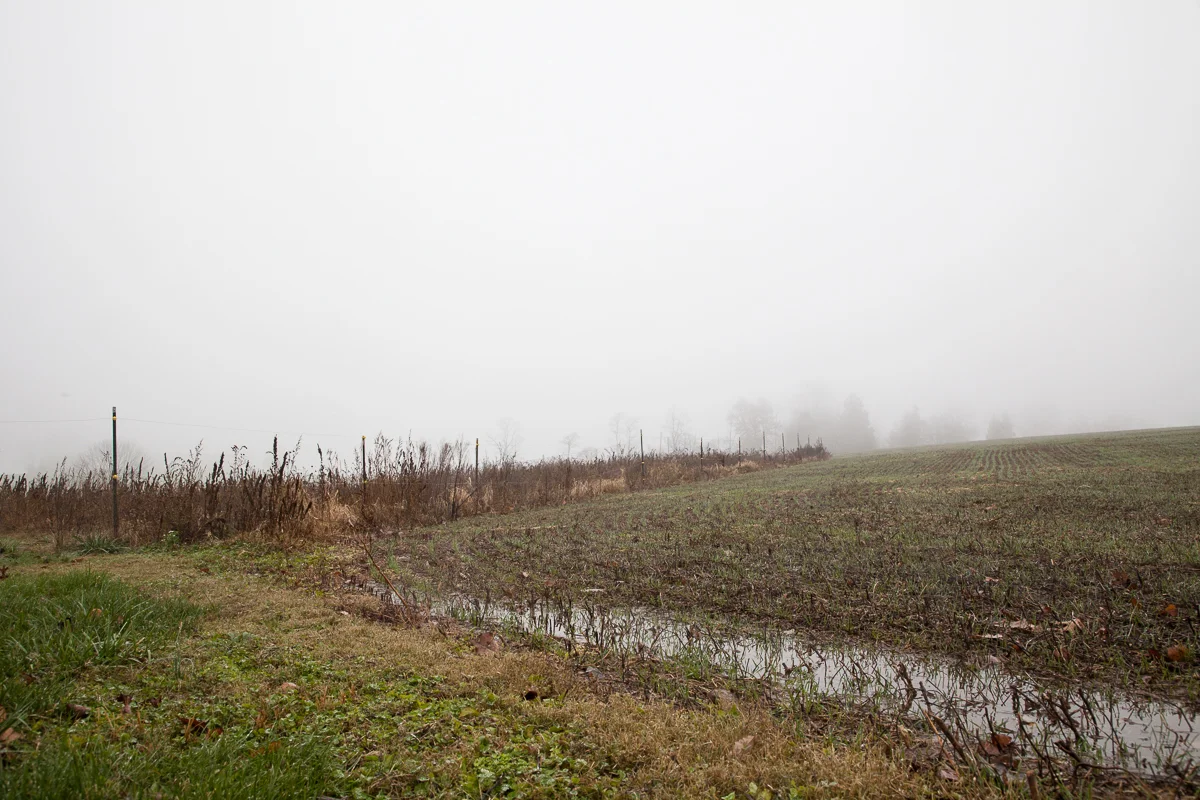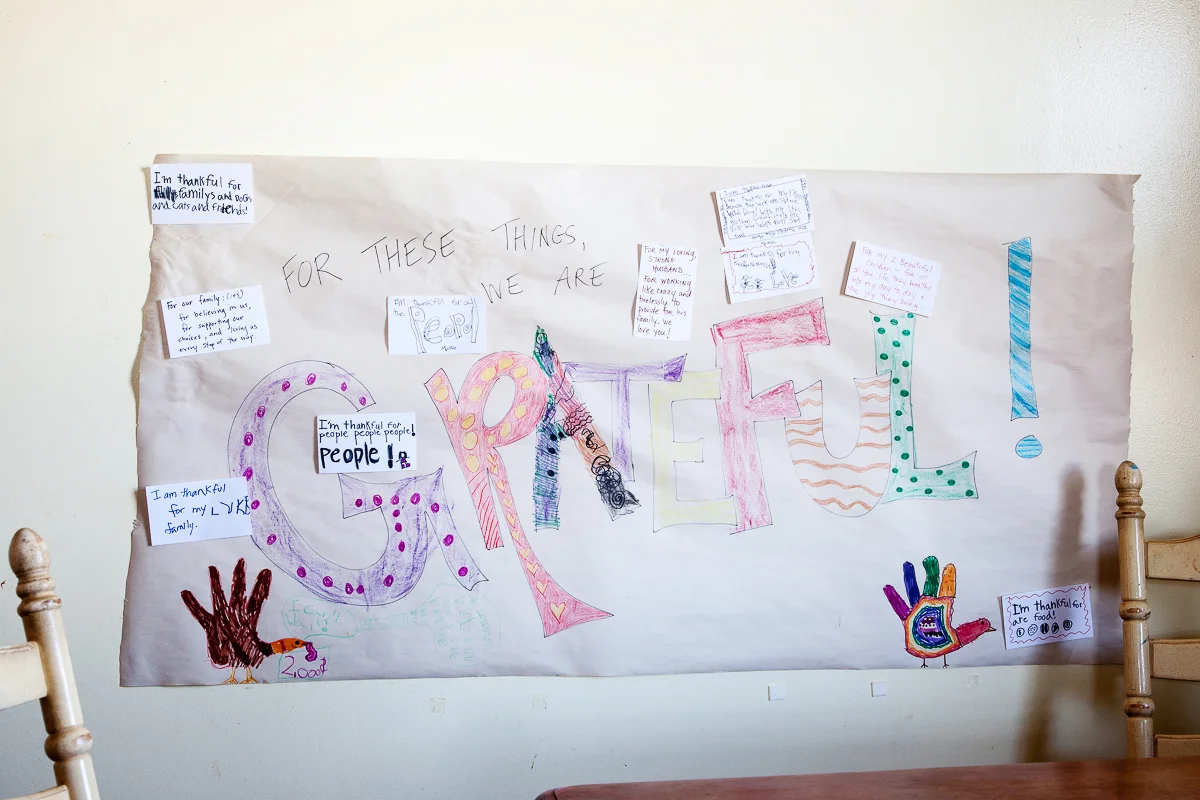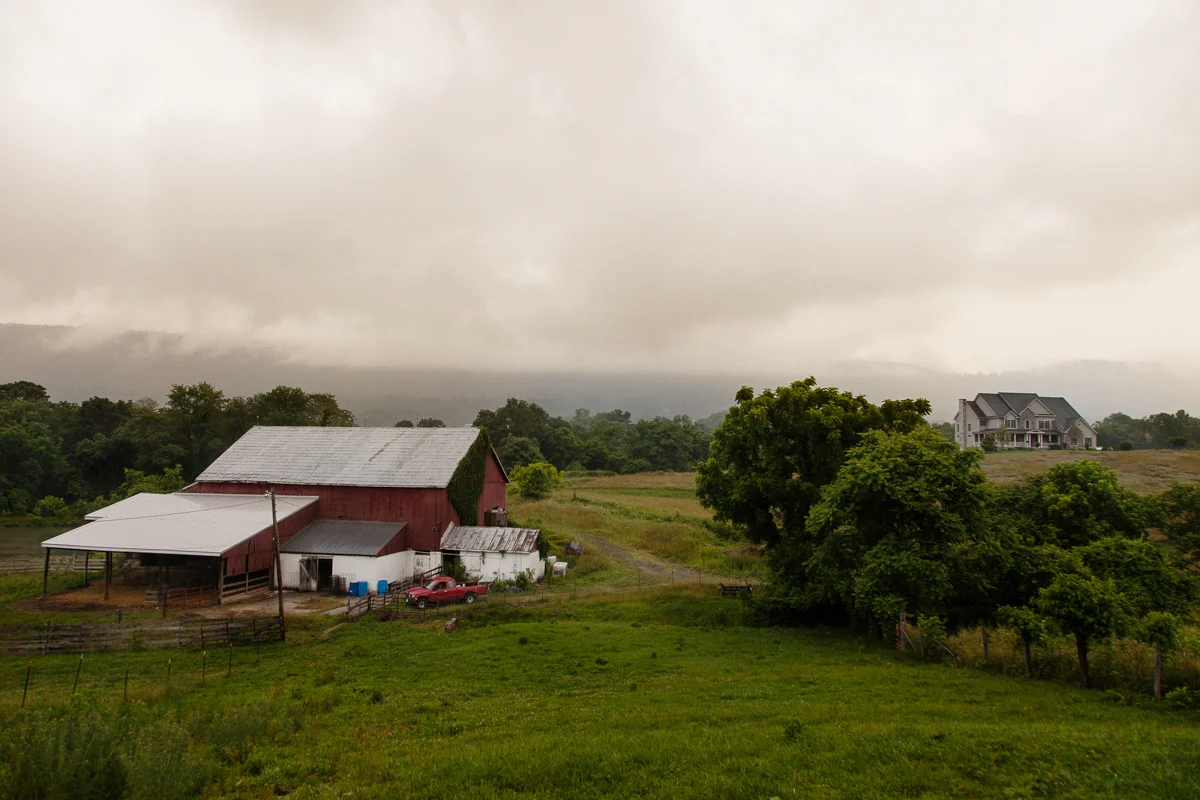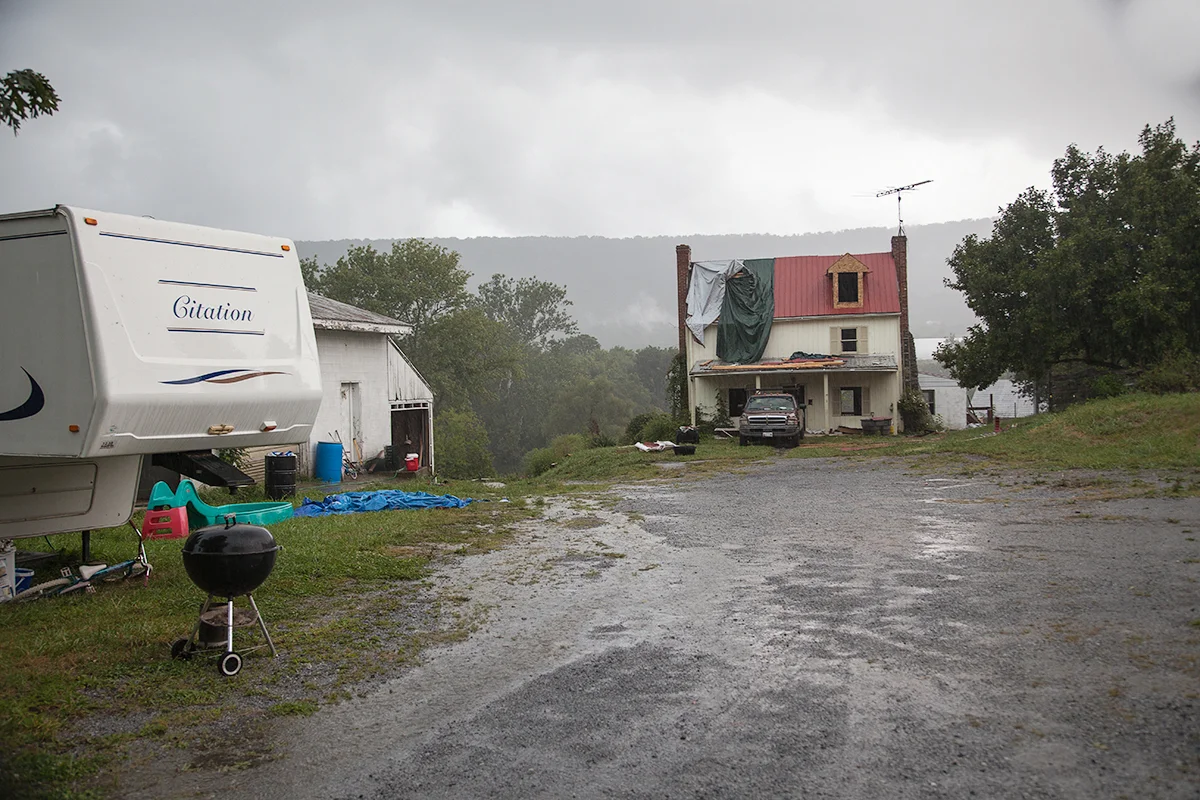Moving to Vermont
After Shannon’s children were born, she again felt the strong pull to farm her own place. She knew it was the lifestyle that she wanted for her family, but she wanted to be having it on a farm she owned herself. She and husband BJ decided that they’d have a better chance of finding a large farm in Vermont, and it would be a more suitable place in which to raise their kids. They moved the family in the summer of 2008 but soon found that they were mistaken about the likelihood of affording the 100-acre farm to which they aspired.
Instead they bought a cottage with four acres. Shannon grew vegetables and started a farmer’s market in an open public space in town, inviting other farmers to sell there as well. That market is still going strong. From what I know about Shannon, I would have thought that the life she had in Vermont would have been her dream. And in many ways it was, but as her kids grew older, both Shannon and BJ missed having immediate family around.
Back Down the East Coast
BJ’s gift is restoring timber barns, and before they had moved to Vermont, he did a large restoration project for a family in Maryland. (I’ve seen the barn, and it’s a spectacular restoration.) That family contacted Shannon and BJ in Vermont to see if they might be interested in renting a neighbor’s 15-acre farm. The farm wasn’t far from where BJ’s family lived, so in 2010 they packed up and moved back down.
Once back in Maryland, Shannon called her farm Bella Terra Family Farm and grew vegetables and raised pigs, steer and chickens. She started a local CSA and also sold at three farmer’s markets.
It was during the time Shannon was renting the Maryland farm that I first met her. She spoke often and passionately about the importance of connecting willing farmers with good farmland, and about how hard it is for farmers to afford land.
I spent many days at Bella Terra, photographing Shannon as she worked and getting to know her. One of my favorite days was a foggy day just before Thanksgiving, when most of the images on this post were taken. Fog is one of my favorite weathers to shoot in. I love the softness, the quiet and the muted colors.
For Thanksgiving, Shannon had posted on the dining room wall a large piece of paper that read Grateful. She and BJ and the kids posted what they were grateful for. What a lovely annual tradition.
Farm Ownership: the Dream Remains
Shannon liked her little farm, but her dream for eight years had been to own her own place, not rent, and she couldn’t let the idea rest. Some people argue that a long-term lease is a viable option to get farmers on the land, but Shannon says she’ll never back down from her belief that from the point of view of financial sustainability and land stewardship, it’s essential that ownership be a possibility. She is passionate about this topic.
Finding good, affordable farmland is a challenge, though, because at least in this part of the world, land is sold at development prices, not farm prices. The part of affluent Montgomery County where Shannon was renting had once been rural farmland, but over time the farms were developed for people wanting the feel of the country only 40 minutes from downtown Washington, DC. In came the McMansions. Shannon’s little house and gently sloping property lay nestled among them, practically swallowed up.
The desire to own her own place was palpable, she told me, and sometimes it kept her up at night. But how on earth could they afford a place?
Buying a Farm
This is the fourth installment about farmer Shannon Varley, drawn to a life as a farmer and hell-bent on owning her own farm, not renting. You can read Part 1 of her story here, Part 2 here, and Part 3 here.
For eight years, Shannon’s goal was to own her own farm, and she and husband BJ visited, walked, and mulled over many, many farms for sale in Maryland, but nothing was quite right. Little did Shannon know that one particular trash-heap of a place would end up being her farm. On her first visit to the property, Shannon wouldn’t even get out of the car. All she saw from the car was a neglected, run-down property that had been completely trashed. Apparently whoever had most recently lived there had not believed in garbage cans but chose instead to throw trash anywhere around the yard. Months after buying the property, Shannon was still finding empty cake cartons in the woods behind the house.
In retrospect, Shannon now likes to say: “sometimes great opportunities are missed because they are dressed in overalls.” Despite her resistance, BJ had a hunch about the trash-heap place and kept bringing it up to her. (Hmmm, there’s that intuition thing again.) Except whoops…opportunity gone. Someone else had made an offer and the property went off the market. Soon, though, it reappeared at a reduced price, and Shannon agreed to at least have a get-out-of-the-car look at it. This time the yard had been cleaned up—a little—at least to the point where she could get her head wrapped around the idea and start to establish a vision for the place.
The Dump
What the property had going for it was a large barn in back that was in great shape. There was some fencing in place, a lovely little pond, and enough land for livestock. She thought that making a good farm out of it was conceivable, and they decided to go for it. They bid low, knowing how much work they’d have to put into the place. Eventually, after lots of back and forth, they secured the property at a reasonable price. That was in April of 2012.
The barn. Notice the McMansion neighbor.
Most important, and what made the deal even possible, was that they were able to finance the purchase for the value of the land alone, because the 1820 house was considered a tear down. “A dump” and “uninhabitable” was what the appraiser called it. The original house was a log cabin, with a stone addition added sometime after, all of which was covered with filthy layers of plaster and drywall. But BJ, whose specialty is restoring timber-framed barns and old houses, suspected that underneath the grime lay a sweet treasure.
But good grief, how would they tackle a job that Shannon said was “overwhelming and more overwhelming”? Shannon described what needed to be done as “the extraction of every inch of plaster, drywall, moldy insulation, flooring, snakes, and anything else that happens to fall out of ceilings or walls. It involves the extensive use of respirators and thick work gloves. It’s a nasty, nasty dirty job.”
And not exactly spending time outside tending to animals or vegetables. But still, a farmer has to have a place to live.
Removing the disgusting plaster from the original log cabin
Shannon and BJ had poured all of their money into the purchase of the farm, so they relied on friends and family for help. They had work parties, and on the first weekend alone, a generous group of folks got more done than Shannon and BJ could have accomplished in a month of weekends.
I wish I could say I was at that party to help and to document the process, but I wasn’t. I didn’t reconnect with Shannon until they were three months into the renovation. While they worked on the house, they lived in a trailer parked just up the driveway. The first time I went into the trailer, to use the bathroom, my thought was “Bless you, Shannon. I don’t think I’d last two days in here without losing my mind.” It was, of course, small and cramped, and they were two tall adults and two children. But to their everlasting credit, they survived 21 months living in that thing.
The house under renovation and a trailer to call home
This was the dining room during renovation
A dream come true
They moved into the renovated house right before Christmas in 2013. In Shannon’s words, “I will never, ever, ever take for granted again: living space over ten square feet, indoor plumbing, an HVAC system, and the pure bliss of being able to close a door.”
And was BJ right about the house? Was it indeed a sweet treasure? Yes, absolutely and completely. Shannon credits BJ with taking “decades of neglect and transforming it into a work of art.”
Fortunately I was able to be at the grand housewarming party in January of 2014, and I couldn’t believe the transformation. The original log cabin had been revealed; there was a huge and inviting kitchen with stone walls and a deck off the back that overlooked the barn; BJ had rescued a fabulous claw foot bathtub from a hospital in West Virginia; and the bedrooms upstairs were lovely and snug. It had become a dream house. And it was featured in the October 2014 issue of This Old House.
The quote from Rumi written above the back French doors perfectly reflects Shannon’s spirit
Shannon’s dream had finally, thankfully, gratefully come true. Eight years of slogging through moves and renovations and mud and dirt and hard work and raising kids and animals and all of it—so much determination and grit. It was a joy to behold.
Now she could finally turn her full attention to her farm and building up its infrastructure.
You can read all about it in Part 5.














